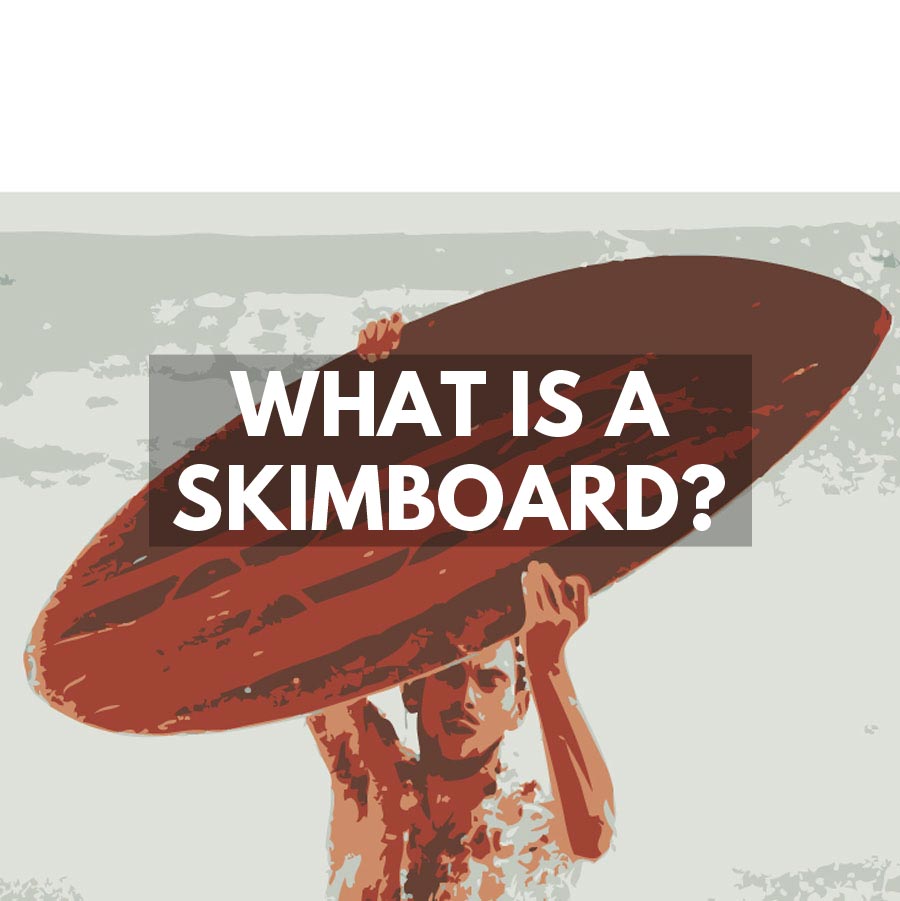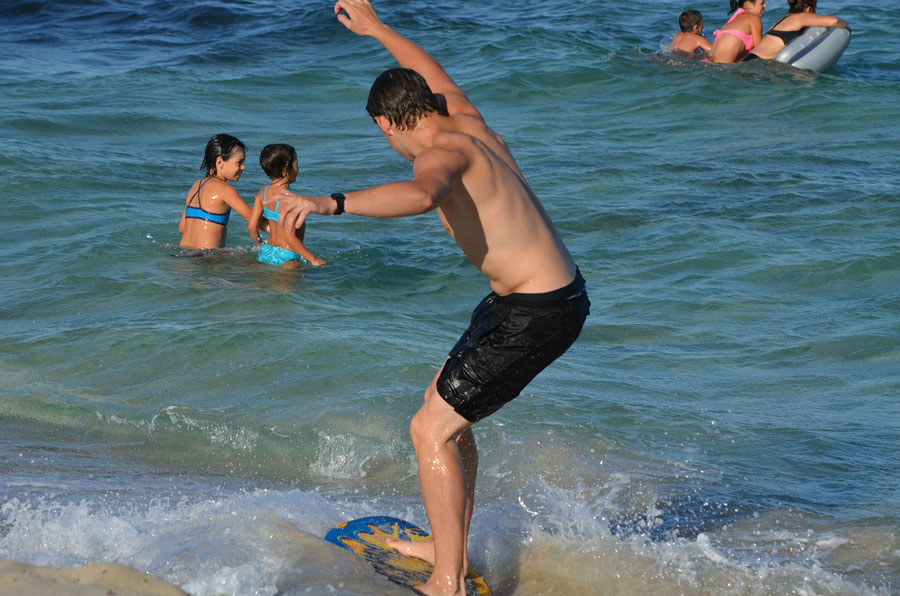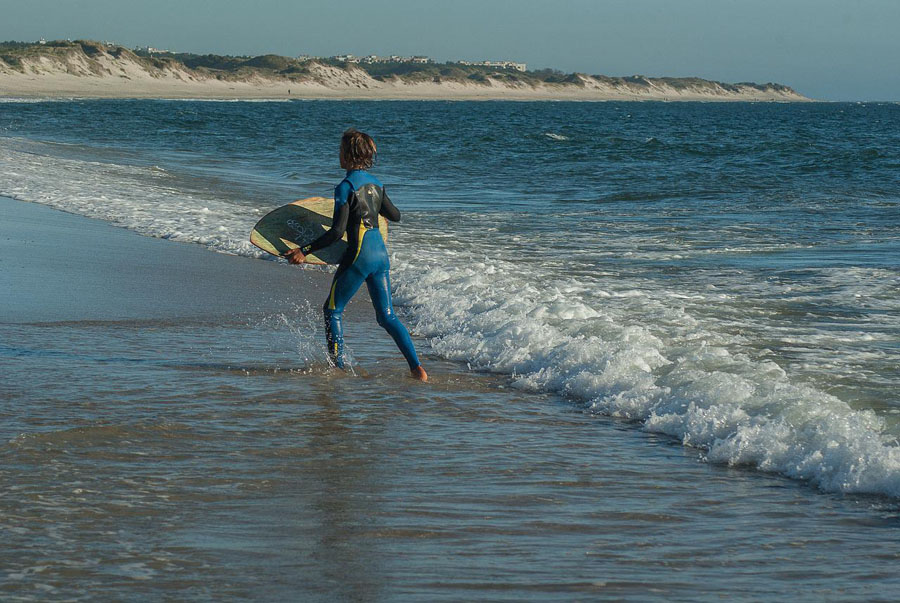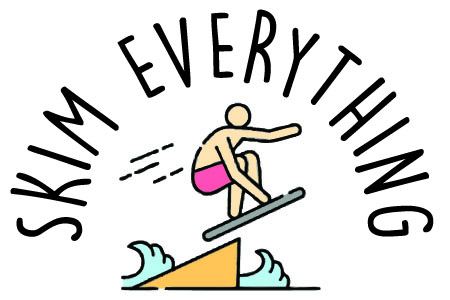
What is a Skimboard?
If you’re asking the question “what is a skimboard”, then you have come to the right place. In this guide, you will learn what a skimboard is and what makes a skimboard different from a surfboard or bodyboard. By the end of this article, you should be an expert on what a skimboard is.
Skimboards are a board used to glide or “skim” across the water, wet sand, … or even snow! A skimboard is generally shaped like a small surfboard without fins and is about 3-5 feet long and 1.5-2 feet wide.
Skimboards can range from DIY plywood discs used by kids at the beach, all the way up to carbon fiber specialist constructions used by world champions. Keep reading to learn more about what skimboards are made from.
What Do Skimboards Do?
Skimboards allow a rider to glide across a surface. Usually, that surface is water at the beach but as the sport evolves it is moving inland to lakes, puddles, canals, water features, and even flooded skateparks.
Remember when you were a child and you “skimmed” rocks across the water? Fun huh! Now imagine, that rock is a skimboard and you are standing on top of it but instead of skipping you are skimming. This is what a skimboard enables.
A skimboard can be used by beginners, professionals, and anyone in between. Great fun for families on holiday. At a beginner level, a skimboard is used on the beach at the water’s edge. At more experienced levels, a skimboard can go into the shallow water at the beach and turn around (carve) to ride waves that break on the shore (called the “Shore-break”).
Of course, we are humans and tend to push everything to extremes… so a new trend is “urban skimboarding” or “flatland skimboarding”. Done on fountains, water features, or essentially anyplace where land meets water. Skimboarding mimics skateboarding but without the wheels.

How Did Skimboarding Start?
Skimboarding is said to go back to the 1920s. Where lifeguards at Laguna Beach, California, made it popular by “skimming” across the sand on wood planks. To this day, Laguna Beach is considered the home of skimboarding and is the location for some of the biggest skimboarding competitions in the world.
What are Skimboards Made from?
Skimboards are commonly made from plywood, fiberglass, and even carbon fiber.
Plywood skimboards are much cheaper and well-suited for beginners because they are robust. Skimboarding on waves will need a fiberglass-type skimboard. Plywood skimboards can do this too, but that is really pushing their limits and makes it harder for the rider to do so.
Carbon fiber skimboards are the most expensive and are usually only designed for advanced riders or professionals. They are designed for high performance and built for strength. Not for beginners :).
Are Skimboards Easy to Use?
Skimboards are very user-friendly and very fun. If an 8-year-old can learn it… well, anyone can.
Of course, there is a ‘knack’ to it. Dropping the skimboard at the correct distance and speed, and jumping on it with a good stance and balance are the keys to success and fun. These can easily be learned in an afternoon at the beach with a few thrills and spills. Siblings and friends have a great time laughing at each other’s attempts.
Then, advancing into wave riding requires great balance, some core strength, and of course practice practice practice!

Is a Skimboard the Same as a Surfboard?
A skimboard is not the same as a surfboard but they have similarities. A skimboard and a surfboard are different crafts for doing different things. For example, a surfboard needs to float well and be paddled, whereas a skimboard needs to be smaller so it can be held while running, and resist being jumped on!
Surfboards and skimboards are different sizes and skimboards do not have fins as a surfboard does. It’s like cars and trucks… Both have wheels and use the road but for different purposes. See our deeper look here.
What Size Skimboard Do I Need?
Starting out it is a rule of thumb that your skimboard should come up to your chest, near the Sternum, and should be as wide as you can carry under your arm. Of course, there are plenty of variations but these are the starting points.
Can You Skimboard on A Lake?
Lakes and beaches are some of the best starting points to practice skimboarding. You can skimboard on almost anything… Water, sand, lakes, rivers, ponds, puddles, canals. Even snow and stairs if you are daring enough! Watch this video of a professional skimboarding across a canal!
Variants of skimboarding called “Flatland” or “Urban” skimboarding evolved from people not having access to beaches. These types of skimboarding often have tricks and challenges similar to skateboarding. Very entertaining to watch professionals like this do their thing!
We hope you found this article useful and we fully explained what is a skimboard.







[…] skimboard is wider, lighter, and is not concaved the same way a skateboard deck is. This means it is harder […]